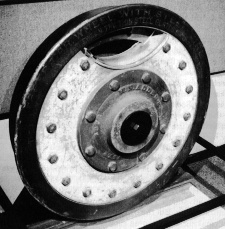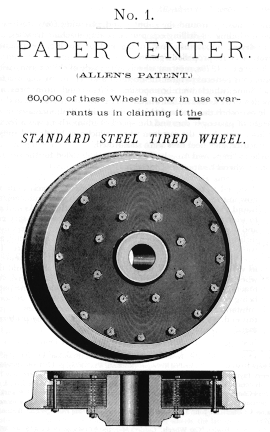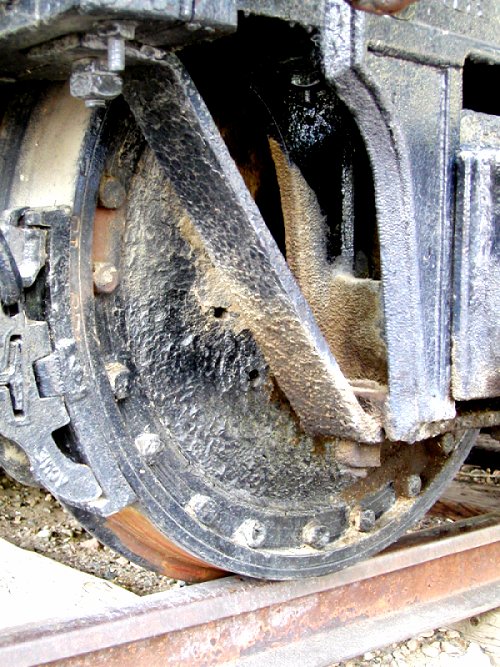Paper Railroad Wheels
Today, a technology dies when we lose our nerve. The University of Houston's College of Engineering presents this series about the machines that make our civilization run, and the people whose ingenuity created them.
Helena Wright, curator of graphic arts at the Smithsonian, is an expert on paper. She tells a remarkable tale about paper.
The story begins 200 years ago. The 18th-century English had begun making all sorts of things from laminated paper with a japanned lacquer finish. We see trays, clock cases -- even carriage parts -- of japanned paper. Soon after, we find a growing use of papier-maché -- of items made directly from paper pulp.
Before the Civil War we made almost all paper from rags. Then we began making paper from wood and other fibers. We also began making a whole array of new products from those new papers.
In 1867 an inventor, Richard Allen, went into business with his brother-in-law making paper from straw. Allen had been a railway engineer. Now he concocted a wild use for his new paper.
Cast-iron railway wheels transmitted every imperfection on the track into the car above it. Early train rides were noisy adventures. Allen invented a quiet railway-car wheel. It had a steel rim and an iron hub. But its center was laminated paper.
People had made other kinds of composite wheels. They'd tried wood, but wood reacts to weather. Laminated paper was more stable. Wood can split along its grain. Paper doesn't.
Enter now George Pullman. Pullman's classy-luxury-railway-car business took off just after the Civil War. Allen's paper wheel was just the thing to bring quiet elegance to Pullman's dining and sleeping cars. Pullman became Allen's champion.
Paper railroad wheels lasted 25 years while railway cars grew larger and larger. Finally, wheels began breaking under the load. Not the paper ones, but other composite wheels. Heavy freight trains coming down out of the mountains put huge stress on their wheels when engineers applied the brakes.
Allen's wheels didn't fail. But after George Pullman died, the public's confidence in steel riding on paper did begin to fail. We went to steel wheels. We fitted them with fancier suspension systems and went on about our business.
Still, if paper wheels are forgotten, the concept is not. It's come back, and it's writ large. Laminated paper was a composite material. Today we make composites of glass or carbon fibers in a plastic matrix. We make many automobile wheels from composites not too different from the lacquered paper in Allen's old wheel. It was non-metallic composites that hid the Stealth bomber from radar.
Yet paper and iron still seem too different for the mind to hold. I suppose it's little wonder we lost confidence and went back to steel -- when we really didn't have to.
I'm John Lienhard, at the University of Houston, where we're interested in the way inventive minds work.
(Theme music)
Wright, H.E., George Pullman and the Allen Paper Car Wheel. Technology and Culture, 1992, Vol. 33, No. 4, pp. 757-768 and cover.
I am most grateful to Helena Wright for providing a great deal of additional information and advice.

Image courtesy of Smithsonian Institution, National Museum of American History
The Smithsonian Institution's Paper-Cored Railroad Wheel

Image courtesy of Smithsonian Institution, National Museum of American History
Paper-Cored railroad wheel as displayed in an Allen Paper Car Wheel Co. circular

Above, an actual in situ "paper wheel". Below, the Pullman car that rides upon it. (Both images from the Railroad Museum in Golden, Colorado. Photos by John Lienhard.)
